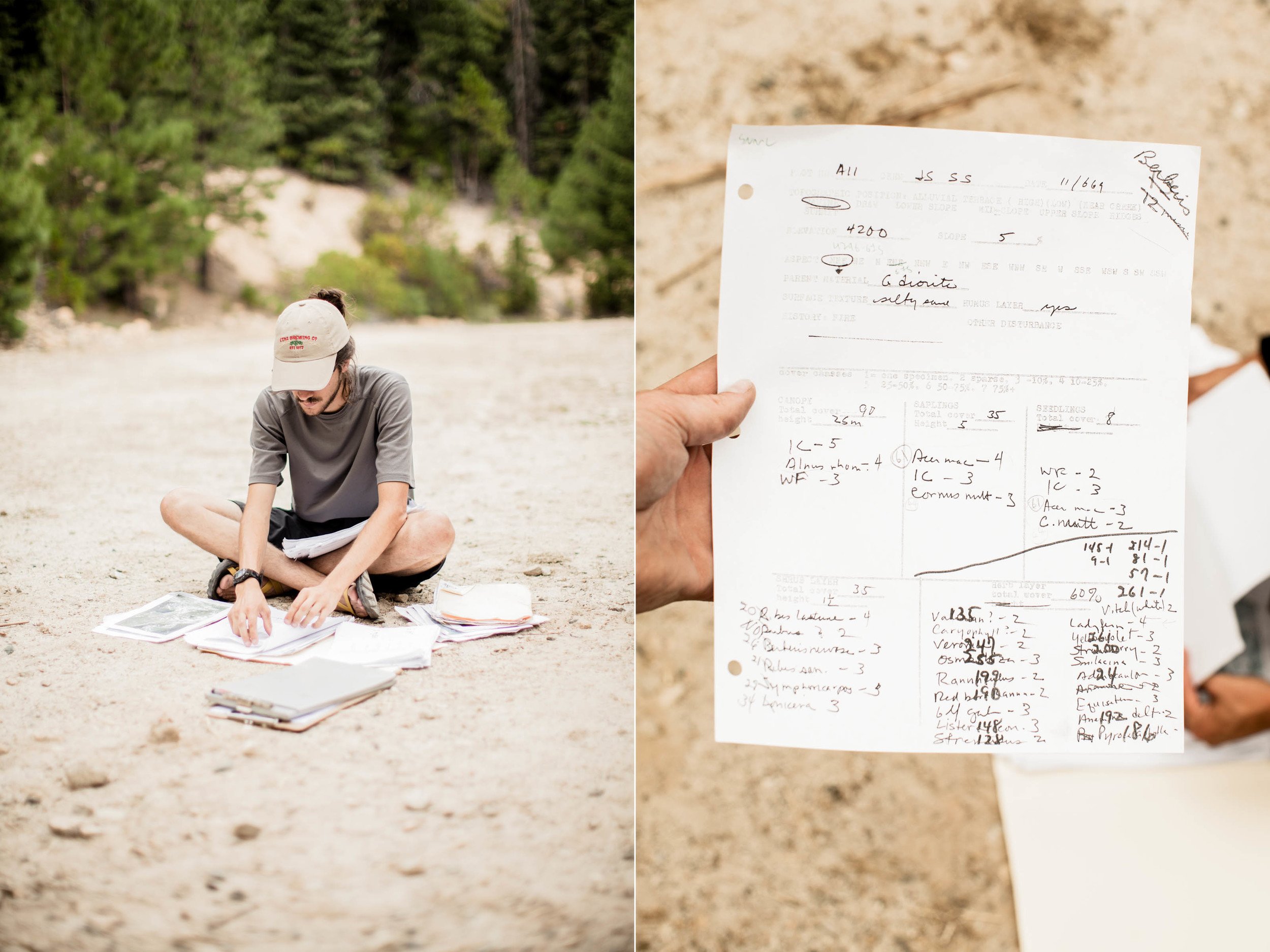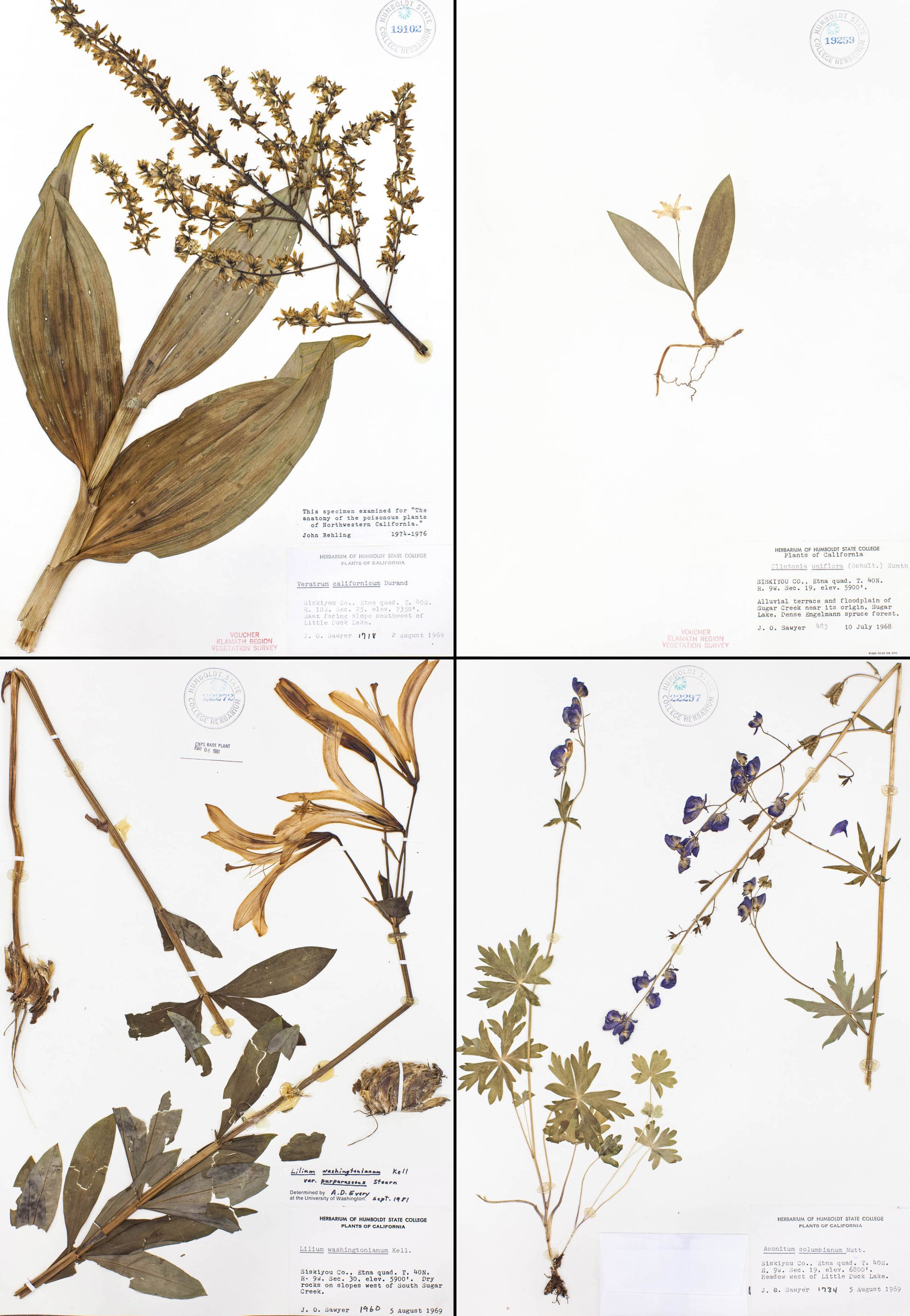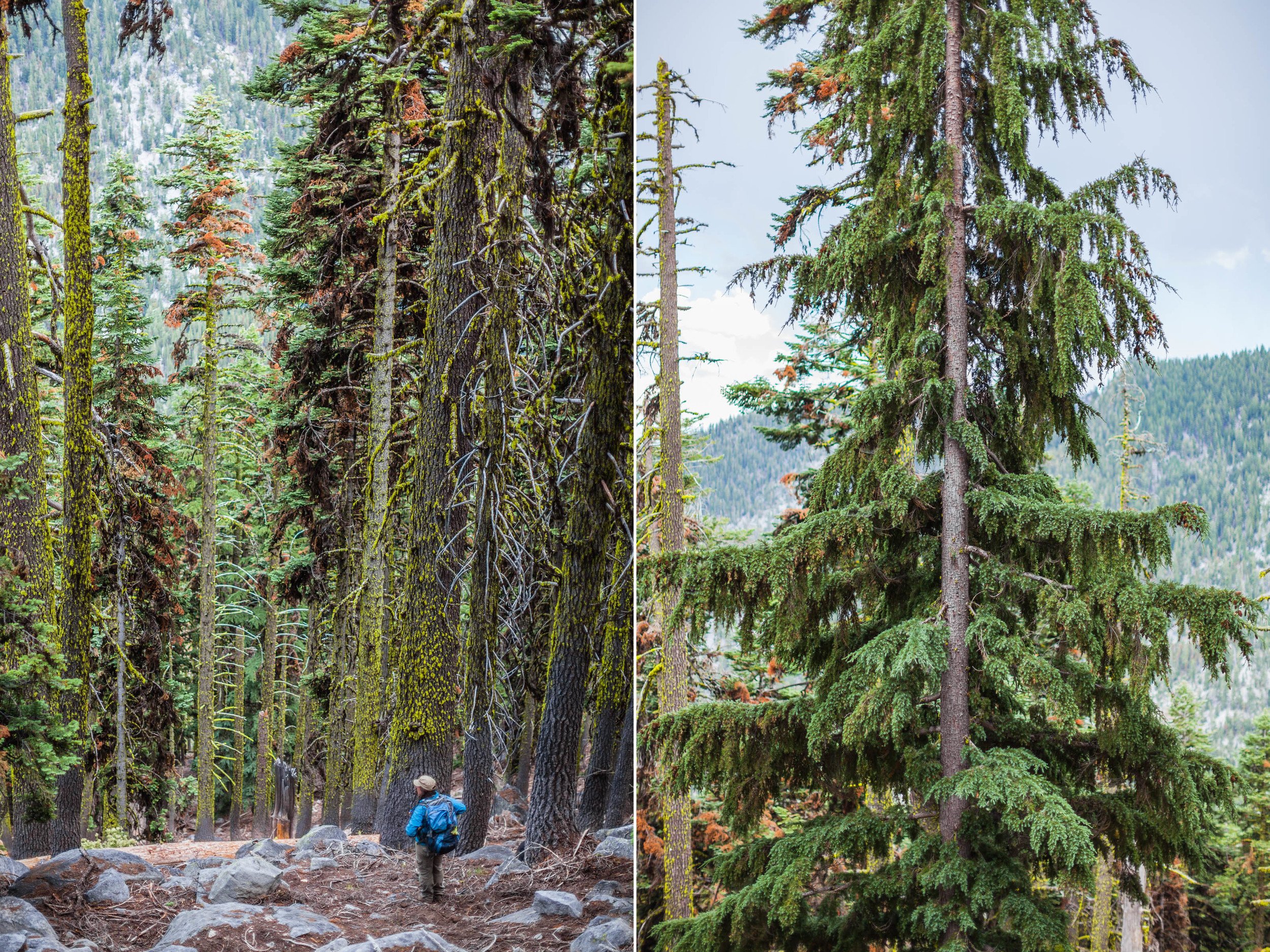
Return to the Russian Wilderness
The Russian Wilderness, nestled in the mountains of Northern California is home to the "Miracle Mile," an area containing some of the greatest diversity of conifer species in the world.
Today, drought, climate change, and forest pathogens are taking their toll on the ecosystem. Healthy forests of the late 1960's are showing significant signs of stress.
I spent time with a botany field team working to locate and collect data from plots originally surveyed in the 1960’s in order to make comparisons between the forest of the past and present.

DARK CLOUDS OVER THE SICK AND DYING: A pair of Lodgepole pine showing various stages of affliction from forest pathogens; needle browning, defoliation and eventual death.

BOTANICAL SPECIMENS: Collected by J.O. Sawyer in the late 1960's these conifer cuttings are among many specimens collected from the Russian Wilderness in Klamath National Forest, California.

OLD AND NEW: Left: Drew Bost sorts through binders containing prints of maps overlaid with GPS coordinates of original survey plots and photocopies of original data sheets. Right: A photocopy of data from the original plot survey, information from these sheets is used to relocate specific plots by landmark and for comparison with updated survey findings.

BOTANICAL SPECIMENS: Collected by J.O. Sawyer in the late 1960's small flowering plants are among many specimens collected from survey plots in the Russian Wilderness in Klamath National Forest, California.

TOOLS OF THE TRADE: Measuring tapes and a rangefinder are key tools to measure plots, tree trunks and determine tree height.

JOSEPHINE LAKE: Melissa DeSiervo, Humboldt State University graduate student, points to the location of Josephine lake and nearby survey plots on a modern satellite map overlaid with original plot locations.

HARSH TERRAIN AND DROUGHT: Left: A view of the steep mountainside above Josephine Lake. Right: After years of historic drought most of Josephine Lake has evaporated, leaving behind barren rocks and a small pool in the deepest portion of the basin.

THE OLD AND THE NEW: Left: Melissa DeSiervo, stands among a mature forest of sick Shasta red fir trees. Like other stands of Shasta red fir in the Russian Wilderness, most are showing significant signs of stress which can lead to a mass die off. In this particular location nearly every tree of every age is showing needle browning, many of the standing trees have significant defoliation or have already died. Right: A Western Mountain hemlock stands tall in an area of forest where most of the Shasta red fir have died. The hemlock seem more resilient in the face of ecological stresses such as pathogens and drought and may indeed become the primary cover in this portion of the mountains.

A TALE OF TRUNKS AND TAPES: Left: Drew Bost uses a measuring tape to determine the boundary of a survey plot. Right: Drew Bost Measures the circumference of each tree within the survey area. Trunk width, species, height, and notes on health are recorded for each tree. In the understory plant species and ground cover make-up are recorded as well.

RECORDS OF THE STANDING DEAD: Left: Using a toppled tree as a writing surface, Melissa DeSiervo, records plot data. Right: Melisa DeSiervo uses a rangefinder to determine tree height while Drew Bost reaches high to keep a tape line level while measuring a snag on a steep slope.

NOWHERE TO GO: A rocky outcropping is host to Whitebark pine and other species of conifer whose range is limited by elevation. As increasing temperatures expand the growth range of lower elevation species, high elevation trees such as the Whitebark pine may become choked out of the ecosystem as moving up hill is no longer an option.

SIGNS AND SYMPTOMS: Left: The Bulbous shape on this branch is indicative of emerging mistletoe, a native parasitic plant that draws water and nutrients from its host tree. Right: Measuring a scarred trunk, oozing sap and irregular bark is indicative of forest pathogens such as bark beetles and fungal infection. Tree death due to bark beetle activity is on the rise throughout the west. The tiny beetles consume the inner phloem and cambium bark layers. In drought conditions trees often succumb to infestation once the beetle's tunnels have "ringed" the trunk, hindering the trees ability to draw water up to the needles.

BINGHAM LAKE: South of the Miracle Mile, Bingham lake sits below Russian Peak. The forest here also shows signs of stress and pathogens.